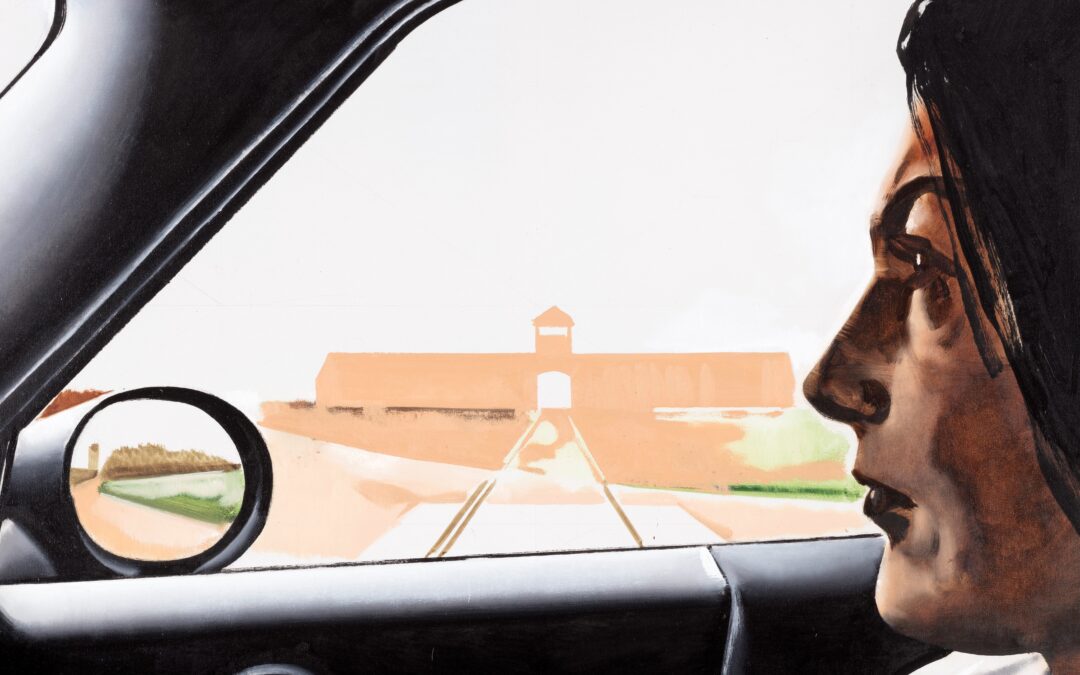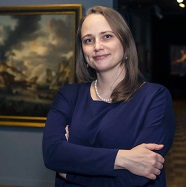By Aleksandra Janiszewska
For many decades, the ambassador of contemporary Polish art in the western world was the Polish School of Posters. Its representatives taught at foreign universities, and one of them, Wojciech Fangor, in 1970 became the first (and still only) Polish artist to have an individual exhibition at the Guggenheim Museum in New York.

Wojciech Fangor, poster for the film Ballad of a Soldier, 1959
New generations are now becoming the poster children – pardon the pun – of Polish art in the international arena. One such star is Wilhelm Sasnal, whose monographic exhibition Wilhelm Sasnal: Such a Landscape at Polin Museum of the History of Polish Jews is open until 10 January 2022.
Sasnal was part of the Ładnie Group, whose members painted in a simplified style, using everyday events as subjects that were often seemingly trivial and banal. Their art was known as “banalism” or “popbanalism”.
“The Ładnie Group negates the myth of the brilliant modernist artist producing art under the influence of inspiration and questions the approach of the avant-garde artists who believed that art can change the world,” wrote art historian Marta Smolińska-Byczuk. “What remains is the true ace of a commercial world in which art functions as a product to be advertised, like soap, washing powder or dog food.”
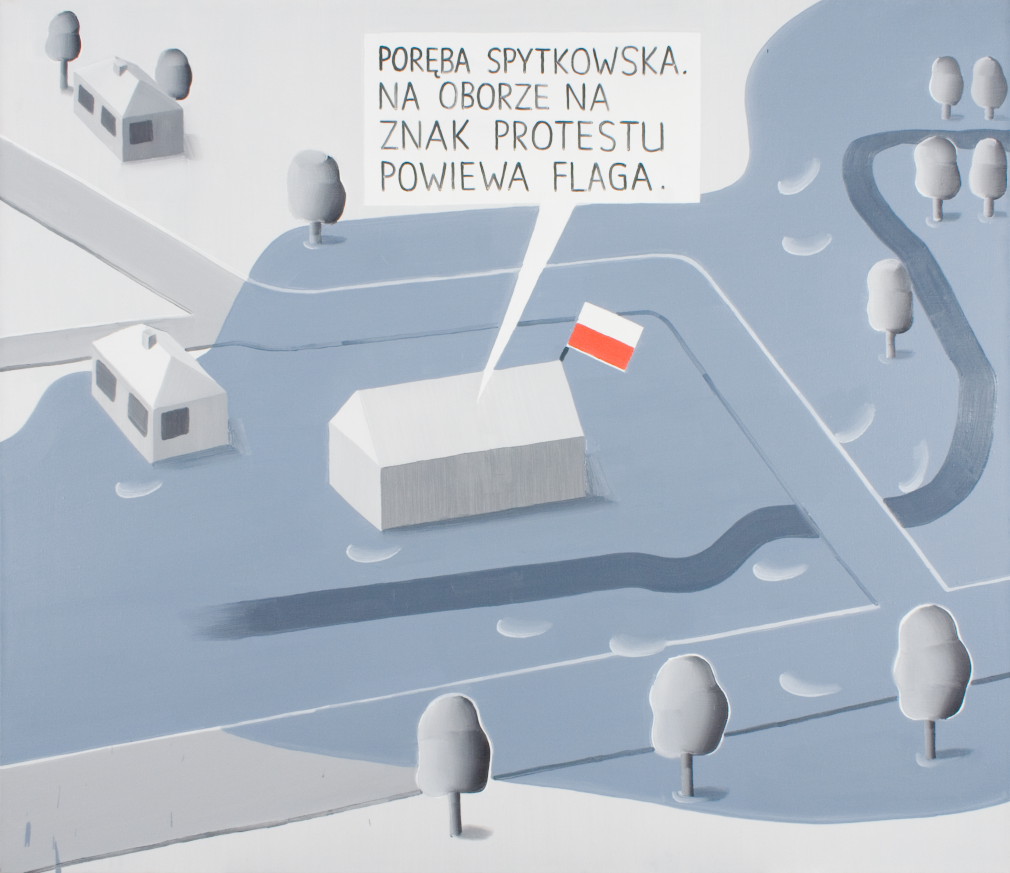
Marcin Maciejowski (formerly of the Ładnie Group), Poręba Spytkowska, 2002
Sasnal’s painting was soon proclaimed the voice of the generation born in the 1970s that grew up during the transformation of the political system in Poland after communism collapsed at the end of the following decade. One of the main motifs when he was working in the Ładnie Group was criticism of the superficiality of mass culture as well as the reality of early capitalism in Poland.
With time, Sasnal’s art abandoned its banalistic characteristics and took on a more engaged form. The artist uses his works to explore difficult and important topics from Polish history, such as the Holocaust, the fate of the Polish Jews, and Polish national identity. These subjects are also present in the landscapes currently exhibited in Polin.
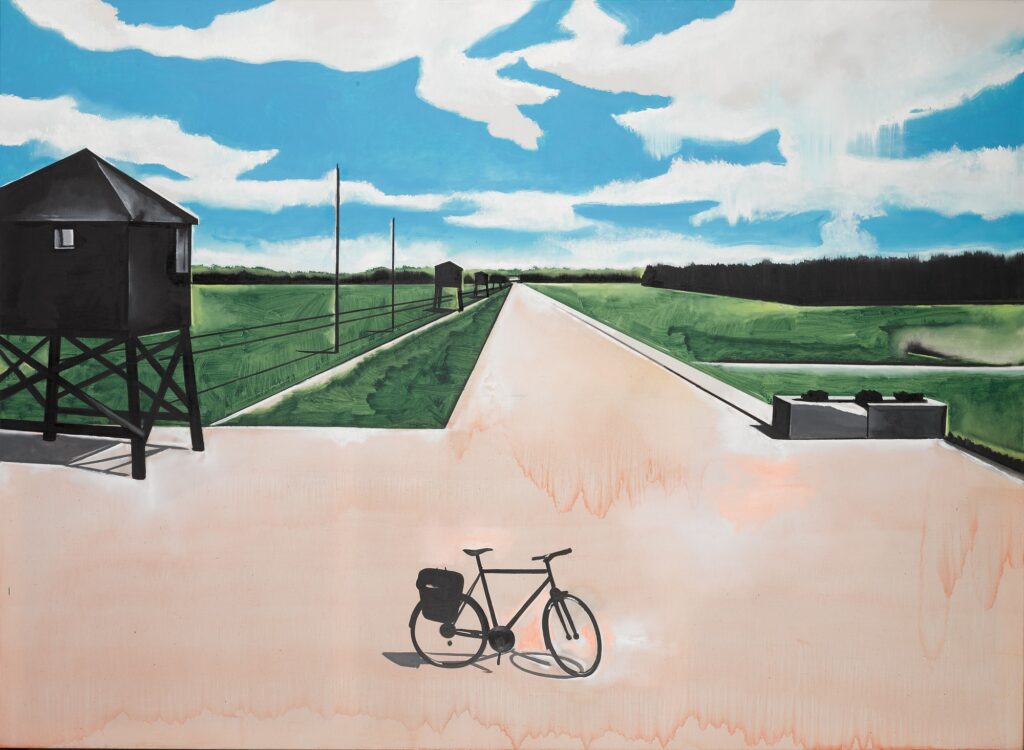
Wilhelm Sasnal, Untitled, 2016, oil on canvas, in deposit at POLIN Museum of the History of Polish Jews, courtesy of the artist and Foksal Gallery Foundation, Warsaw
From the outset, the other major element of Sasnal’s art has been short and full-length films. These embrace diverse aesthetics: structural works, documentaries, music videos , and “personal cinema ”. The last one is a reference to a trend that developed during the communist rule in Poland, as an artistic reaction to the restrictions in public freedom of speech. As he says, he puts in his films that which he cannot paint.
Sasnal’s works achieved recognition outside Poland just a few years after he graduated. This breakthrough followed a monographic presentation of his works at the renowned Art Basel fair in 2002. Such was the interest in Sasnal’s paintings that the same year the artist was invited to participate in major international exhibitions.
Za mniej niż tydzień – w czwartek 17 czerwca – od 10.00 wystawa Wilhelm Sasnal: Taki pejzaż. Weźcie udział również w wydarzeniach towarzyszących wystawie. Nasze propozycje na weekend otwarcia 17-20 czerwca o, tu: https://t.co/qmVXaSWxoa pic.twitter.com/5ScFfapIgT
— POLIN Museum (@polinmuseum) June 11, 2021
The following year, he had a retrospective exhibition at Kunsthalle Zurich. This was followed by further exhibitions at the Van Abbemuseum in Eindhoven (2006), K21 in Dusseldorf (2009), Haus der Kunst in Munich (2012), Whitechapel Gallery in London (2011/12) and the Kistefos Museum in Oslo (2018).
Sasnal’s position in world art became so significant that his works entered the canon of new European art. In 2006, he featured prominently among the prestigious magazine Flash Art’s top young artists. This international renown was also noticed at home – an independent exhibition was held at the Zachęta National Gallery of Art in 2007.
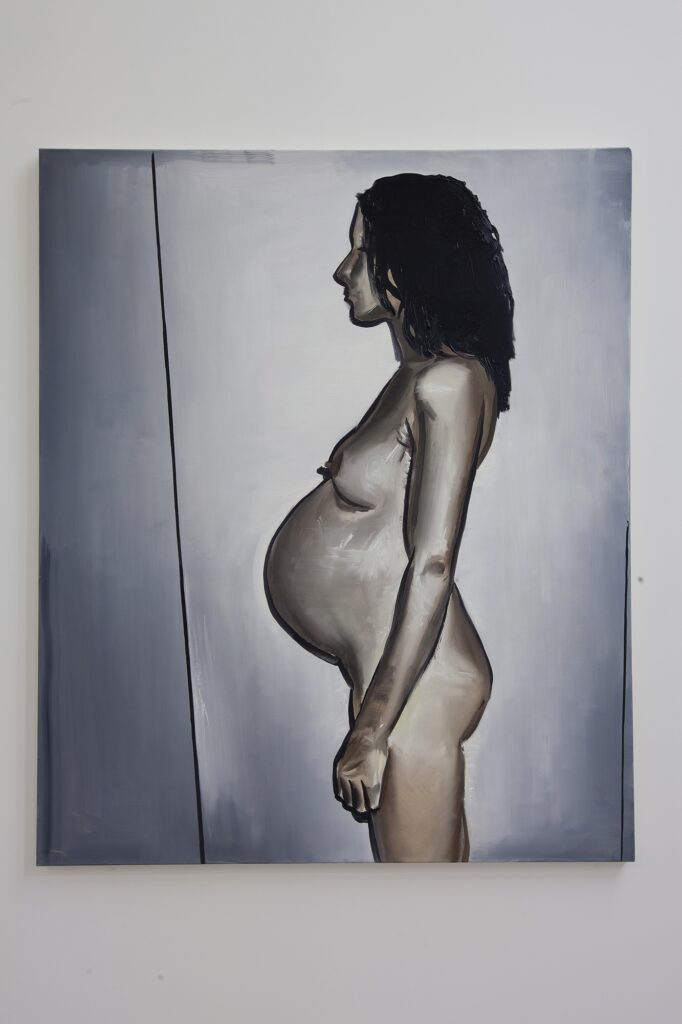
Wilhelm Sasnal, Anka, 2010 (under CC BY-SA 3.0)
This success also came in financial terms. His triptych Girls Smoking was sold for $457,000 in London in 2008. His works can be found in important collections including those of the Pompidou Centre in Paris, Ujazdowski Castle Centre for Contemporary Art in Warsaw, the Saatchi Gallery in London, Tate Modern in London, both the Museum of Modern Art (MoMA) and Guggenheim Museum in New York, as well as numerous private collections.
Sasnal is not the only Polish artist to have achieved recognition internationally in recent decades. A number of his “rivals” have also made waves on the global art scene.
Mirosław Bałka, active since the 1980s, produces art in various media. His works, mostly sculptures, have strong attachments to the environment in which they are placed. Their power of expression is not based on aesthetics, but on feeling – viewers are confronted with them and introduced to their sphere of influence.
Bałka is best known for his installation How It Is in Tate Modern’s Turbine Hall as part of the Unilever Series in 2009/2010. In this cycle, every year an invited artist must face up to the monumental interior of the postindustrial space. Bałka constructed a gigantic, steel container 13 metres tall, 10 metres wide and 30 metres long raised on high stilts.
Visitors could go inside, where they were confronted with the growing darkness and their own emotions. The Polish artist’s installation, the tenth in the series, was regarded by Rachel Campbell-Johnston from The Times as the best to date thanks to its impact and use of the space.
Paulina Ołowska uses and combines diverse media: painting, collage, installation, performance, fashion and music. They can be found in the collections of the Pompidou Centre, MoMA, and the Tate.
After Ołowska’s exhibition Wisteria, Mysteria, Hysteria at Metro Pictures in New York, the New York Times included her in its list of “Creative Geniuses Who Defined Culture in 2016”. It called her “Poland’s most optimistic, backward-looking artist”, taking “faded utopias” as her “greatest inspiration”.
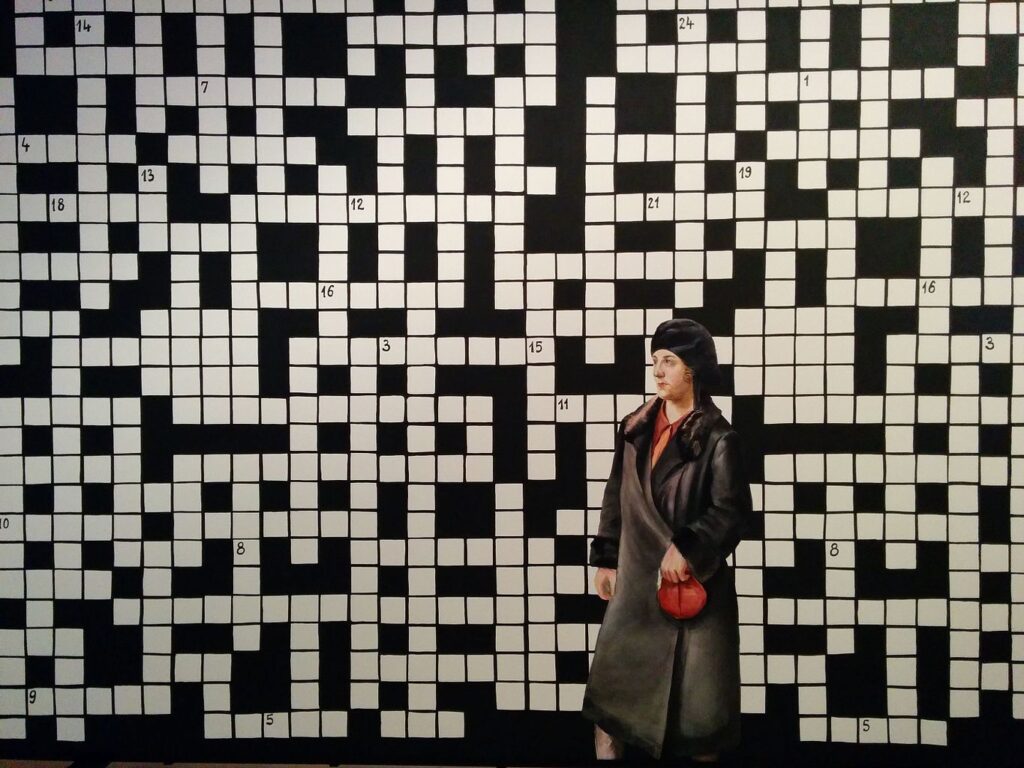
Paulina Ołowska, Crossword Puzzle with Lady in Black Coat, 2004 (under CC BY-SA 3.0)
Ołowska’s sentiment for the past also translates to her extra-artistic activities. She worked with the Foksal Gallery Foundation to restore – and fund from the sales of her own works – the famous neon Volleyball Player (Siatkarka) created by the renowned graphic designer Jan Mucharski in 1961 and displayed on Warsaw’s Constitution Square.
Piotr Ukłański achieved renown in 2008 with The Nazis, exhibited at Zachęta in 2008. In this work, the artist, born in 1968, presented 164 reproductions of stills from films depicting famous actors appearing in the uniforms of Hitler’s soldiers.
The Nazis, 1998, by Piotr Uklański, plays with the stereotypical portrayal of evil in pop culture @metmuseum pic.twitter.com/qdLSCj5sxy
— Gisele Regatão (@Gregatao) March 16, 2015
One of the protagonists of the work was Daniel Olbrychski from Claude Lelouch’s film Les Uns et les Autres. The reaction of the Polish actor, known for his roles in patriotic films, was dramatic. He used a sword from the production of The Deluge, an adaptation of Henryk Sienkiewicz’s historical novel, to cut out his own picture as well as those of his friends Jan Englert, Stanisław Mikulski and Jean-Paul Belmondo.
Six years later, the reconstructed work was sold for almost £570,000, making Ukłański the most expensive Polish artist. Living and working in New York since the 1990s, he is represented by the influential Gagosian Gallery, associated with such names as Damian Hirst, Jeff Koons, Jean-Michel Basquiat and Roy Lichtenstein.
Katarzyna Kozyra began her career equally controversially. The artist’s diploma work at Warsaw Academy of Fine Arts used stuffed animals – a horse, dog, cat and cockerel – placed on top of each other in an allusion to the Brothers Grimm’s fairy tale Town Musicians of Bremen. The work consists of the aesthetic object of the installation and a shocking video recording of the killing of the horse whose body is used in it.
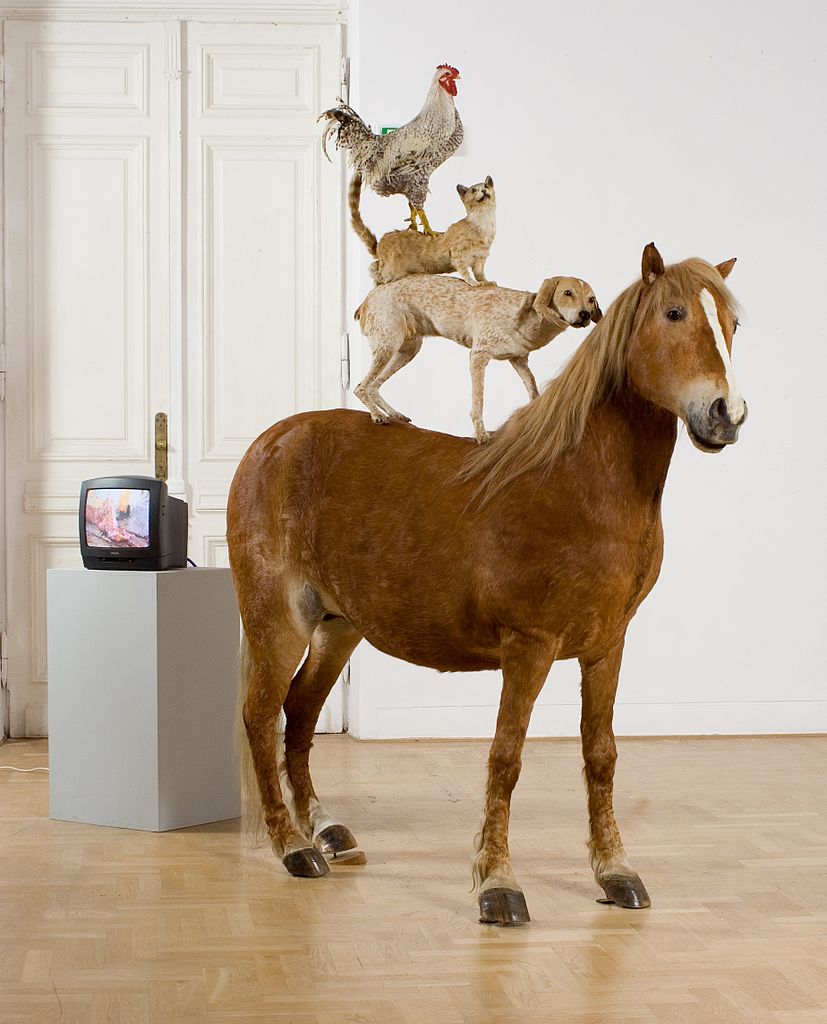
Katarzyna Kozyra, Pyramid of Animals, 1993 (under CC BY-SA 3.0)
Pyramid of Animals met with strong public opposition. In a letter to Gazeta Wyborcza, Xymena Zaniewska, the head of the Warsaw Association of Polish Artists, expressed the widespread indignation: “Replacing the indolence of the workshop with the thrill that we are looking at the corpses of real animals seems exceptionally rotten to me.”
Artur Żmijewski, a colleague from the academy’s sculpture studio, called Kozyra a “mental terrorist”. She thus became the leading representative of critical art in Poland, whose installations and films caused distinct discomfort among audiences.
Paweł Althamer’s path also led from statement, via sculpture installations, towards other forms of expression such as performance and video art. Althamer is interested in expanding human perception, experimenting with diverse media changing human consciousness.
The last 2 days of Paweł Althamer’s mobile art project Golden Bus in @HAMHelsinki 🚌 The bus follows random routes to take visitors on a journey to Nowhere. Read more https://t.co/Xp3f3QC3LD #performance #art
📸 Ludwig Forum Aachen/Carl Brunn | https://t.co/xKbJVkD9Dv pic.twitter.com/xvJDMgnYvo
— IAM (@InstytutAM) August 14, 2019
He also works to build the local community of the housing block in the Bródno neighbourhood of Warsaw where he lives. This led him to set up the project Common Task, with the participation of his family and friends as well as neighbours. Dressed in gold spacesuits, they travel to distant places and implement the artist’s surrealist scenarios.
One such action was a flight to Brussels on 4 June 2009, on the 20th anniversary of the first partially free elections in Poland, in a gold LOT Polish Airlines plane designed by Althamer. The golden crowd visited the Atomium at the site of Expo 58, before heading to the European Parliament and the Grand Place, causing much interest everywhere they went.
All the artists mentioned above are now in their forties, fifties and even sixties. But the younger generation are also carving out a niche. It is hard, however, for audiences to reach these new names as they have not yet been chosen for museum collections or public galleries. This is where Warsaw Gallery Weekend comes in. In a regular joint venture, private galleries open the exhibitions of Polish and international artists on the same days.
Every year, the exhibitions of both recognised artists and those embarking on the artistic scene appear. The exhibitions present paintings, sculpture, spatial installations, photography, as well as works that are difficult to categorise.
The event is attractive not only for collectors of the latest art, who can spend several days familiarising themselves with recent trends on the artistic scene. It is also extremely interesting for all those without any contact with recent art who are afraid to visit private galleries. The 11th edition of the event took place between 30 September and 3 October this year.
The works of contemporary artists not only appear at auctions, in museum and gallery collections, and temporary exhibitions such as the one at Polin. Some can also be seen in the public space without restrictions. Productions by Magdalena Abakanowicz, one of the most important Polish artists of the 20th century, can be seen in Citadel Park in Poznań, where 112 anthropomorphic cast-iron figures over two metres tall have been placed to form the installation Unrecognised.
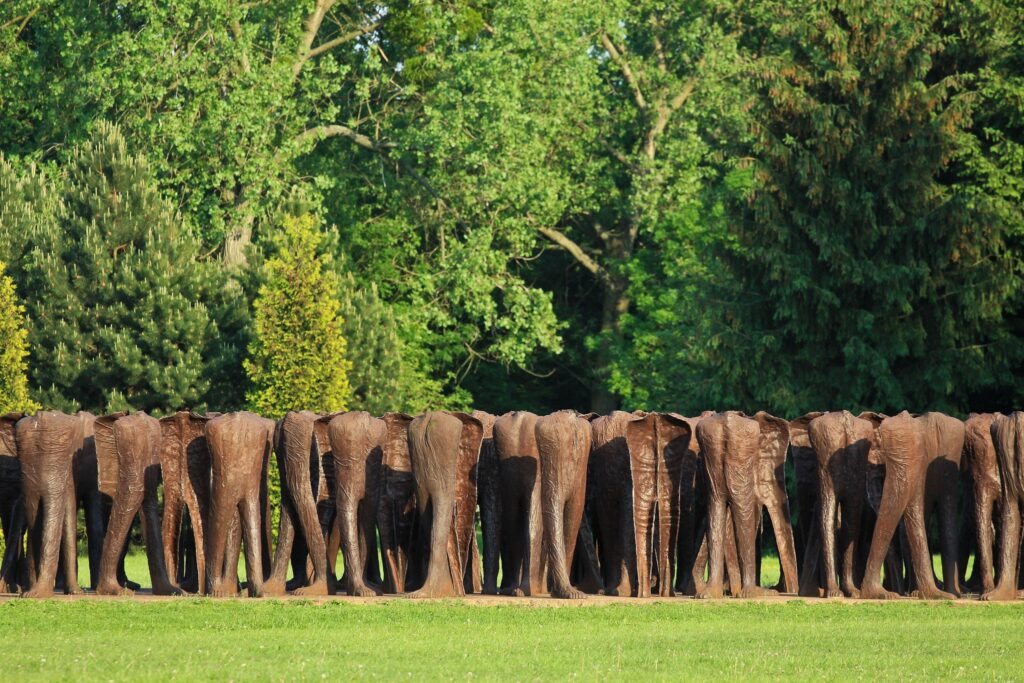
Magdalena Abakanowicz, Unrecognised (Flickr/MFA Poland under CC BY-NC 2.0)
The installation, marking the 750th anniversary of Poznań being granted municipal rights, was inspired by the artist’s recollections of the experience of the crowd going back to her childhood. This was inextricably linked to the communist period, queuing and waiting, accompanied by desperation and fatigue.
Abakanowicz’s works can also be found in Warsaw, with sculptures from the series King Arthur’s Knights named the Wizard, Percival, Lancelot and Galahad.
The Bródno Sculpture Park, the initiative of Paweł Althamer, is another interesting place on the capital’s map. Curated by the Museum of Modern Art in Warsaw, it assembles sculptures by contemporary Polish artists, available to visitors for free all day. This is as good a place as any to start the Polish contemporary trail.

Bródno Sculpture Park (Flickr/MFA Poland under CC BY-NA 2.0)
Translated by Ben Koschalka
Main image credit: Wilhelm Sasnal, First of January (side), 2021, oil on canvas, courtesy of the artist and Foksal Gallery Foundation, Warsaw
